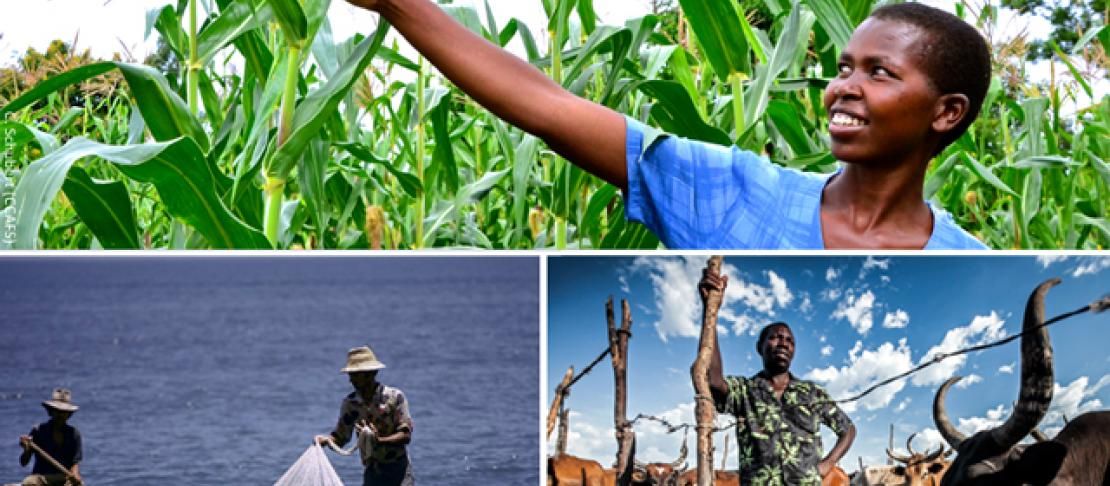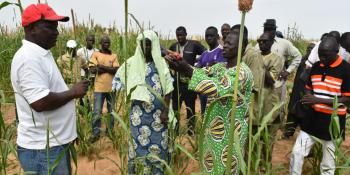As Rising El Niño Threat Underscores Climate-Related Food Risks, Climate Panel Convenes With Farming on the Agenda

BONN, GERMANY (4 June 2015)—As scientists warn of a global climate event later this summer that could disrupt food production worldwide and cause disease outbreaks from Indonesia to Peru, parties to the United Nations Framework Convention on Climate Change (UNFCCC) convened this week amidst growing pressure to make agriculture more prominent in a global climate deal that has been largely silent on this most climate-sensitive sector.
The UNFCCC Subsidiary Body for Scientific and Technological Advice (SBSTA) is responsible for marshaling the scientific evidence to support countries’ decisions that will be included in a global climate change treaty, expected to be hammered out later this year in Paris. And after years of appeals from agriculture experts to pay more attention to farming, agriculture is now substantively and firmly on the agenda, and is being discussed at dedicated workshops at the SBSTA meeting.
The workshops address critical issues, including the need to develop “early warning systems” that would provide an alert of a potential weather-related disruption in food production. In addition, countries will consider recent insights about how climate change could significantly increase the burden of livestock diseases and plant pests in places like sub-Saharan Africa—further depressing yields and income for those already most vulnerable to the effects of climate change.
The CGIAR Research Program on Climate Change, Agriculture and Food Security (CCAFS) and its research partners, including the International Livestock Research Institute (ILRI), WorldFish, the International Research Institute for Climate and Society (IRI), the International Center for Tropical Agriculture (CIAT), and Fera Science Limited, prepared submissions on these topics to help inform SBSTA discussions.
Examining the Effects of Climate Change on Food Production
Even without the added impacts of extreme weather events—like those scientists predict El Niño will cause later this year—climate change will make food production more challenging in many regions. For example, by 2050, areas of Africa suitable for supporting two of its key crops, maize and beans, could decline by 20 to 40 percent. Meanwhile, substantial reductions in forage and heat stress could greatly reduce the productivity of livestock, which millions of Africans depend upon for food, income and fertilizer. And of the world’s 33 fisheries most at risk from being damaged by climate change, 23 are in Africa.
“The recent warnings about El Niño’s potential impacts provide an unfortunate demonstration of how abrupt shifts in growing conditions can quickly affect food production and food prices, particularly in vulnerable areas like sub-Saharan Africa,” said Bruce Campbell, director of CCAFS. “Climate change is already making food production more challenging in many parts of Africa,” he added, “so any effects from an El Niño, which can develop if sea surface temperatures increase by just one degree above average, could just intensify those problems.”
Campbell and other scientists working at the intersection of climate change and food security have been urging country governments to pay more attention to farmers, fishers and pastoralists, and not just because agriculture will need significant help adapting to higher temperatures and other stresses. Agriculture and its associated land use changes also contribute about a quarter of the world’s greenhouse gases and offer major opportunities to mitigate climate change. Agriculture experts see an opportunity for a climate agreement that sets the framework, and for ensuring that funding mechanisms support initiatives that help farmers both adapt to shifting and more challenging growing conditions and reduce their greenhouse gas emissions.
Over the last ten years, agriculture has made very little progress in the climate talks. The workshops in agriculture this year and next year welcome progress, but CCAFS scientists have warned that the bigger threat would be to leave agriculture issues out of any grand bargain on climate change that could be up for negotiation at the UNFCCC summit scheduled for December in Paris.
“Unless farmers in places like sub-Saharan Africa are able to adapt to the impact of climate change, we will not achieve the level of stability and sustainable development that is absolutely essential to the success of any effort that seeks to curb greenhouse gas emissions,” said James Kinyangi, CCAFS’ East Africa regional program leader. “The fate of the climate change agreement is bound tightly to the fate of our food production systems. And climate change is the biggest threat modern agriculture has ever encountered.”
Sounding the Alarm for Both Impending and “Slow Onset” Climate Crises
Kinyangi praised the SBSTA parties for considering agriculture-related issues that agriculture groups have long championed. These issues include the need for early warning systems and contingency planning for extreme weather events to help places that already are vulnerable to food crises—like the African Sahel and Horn of Africa—stay abreast of climate threats.
CCAFS research is helping inform SBSTA on the principles of a successful “trip wire” that would alert decision makers to the fact that extreme weather events, like floods or drought caused by an El Niño, are likely in a few months, or that a “slow onset” climate emergency is forming, like a drought that takes several years to fully manifest its damage.
To ensure success, according to CCAFS, the technical aspects of the early warning system must be coupled with an effective communications effort and well-funded and widely embraced plan if it is to protect vulnerable people farming in the arid and semi-arid drought-prone lands of East Africa.
“We need to make sure our technical advice can produce a response on the ground because we have seen situations before, including in the Horn of Africa, where there was ample warning of a food crisis brewing, but a costly delay in response time,” said Kevin Coffey, a researcher at Columbia University’s IRI, who led the CCAFS review of early warning systems.
In the review, which was submitted to SBSTA in advance of the June meeting, CCAFS studied a number of early warning systems that operate at the international, regional, national and community levels. For example, in the Horn of Africa, where long-term rainfall trends, rising temperatures, and ongoing political instability have increased the risk of drought and famine, governments have come together to monitor risks and coordinate responses to be executed at a more local level. A successful system would set thresholds for indicators like food prices, burden of disease, rainfall totals and crop yields to provide local and national government leaders, donors, and international institutions with alerts accompanied by the evidence they need to justify preemptive action.
According to the review, early warnings systems coupled with early action plans should be a central feature of Africa’s adaptation agenda, and they should be supported by specific protocols and funding streams established in the climate change agreement.
Monitoring “Pole-Ward March of Plant Pests,” Spread of Livestock Disease
CCAFS also will be at the Bonn climate conference to highlight recent findings about how climate change has already set off a “pole-ward” march of plant pests. Scientists have evidence that these crop killers are now moving into areas previously too cold to support them at a rate of about 2.7 kilometers per year and have only reached about a tenth of the countries they eventually will invade.
The researchers are also drawing attention to the effect of climate change on the spread of livestock diseases such as trypanosomiasis, which costs East African farmers US$2 billion per year. ILRI found that overall, in developing countries, 20 percent of grazing animals like cows and goats, and 50 percent of poultry, are lost to disease each year, costing poor farmers about US$300 billion. And among the livestock diseases that most affect poor communities, more than half could be spread farther and faster by climate changes.
CCAFS researchers are developing a number of ways to address the rising threats from plant pests and livestock diseases, such as investing in preemptive pest resistance breeding for crops, livestock and fish; and developing regional early warning systems focused specifically on plant pests and livestock disease.
“More than a billion people worldwide are entirely dependent on raising crops and livestock for survival, and climate change represents an unprecedented threat to their existence,” Campbell said. “We look forward to working with the SBSTA parties in Bonn to find a way to address these concerns within the climate change negotiations by providing them with detailed, objective evidence of the threats we know are out there and examples of the innovative solutions already being tested across Africa and elsewhere that can help us overcome them.”
More information
New briefs highlight critical agriculture issues for UN climate talks
DOWNLOAD THE INFO NOTES SUMMARISING THE CCAFS SUBMISSIONS to SBSTA
Coffey K, Haile M, Halperin M, Wamukoya G, Hansen J, Kinyangi J, Tesfaye Fantaye K, Dinesh D. 2015. Improving early warning systems for agricultural resilience in Africa.
Dinesh D, Bett B, Boone R, Grace D, Kinyangi J, Lindahl J, Mohan CV, Ramirez-Villegas J, Robinson R, Rosenstock T, Smith J and Thornton P. 2015. Impact of climate change on African agriculture: focus on pests and diseases.


